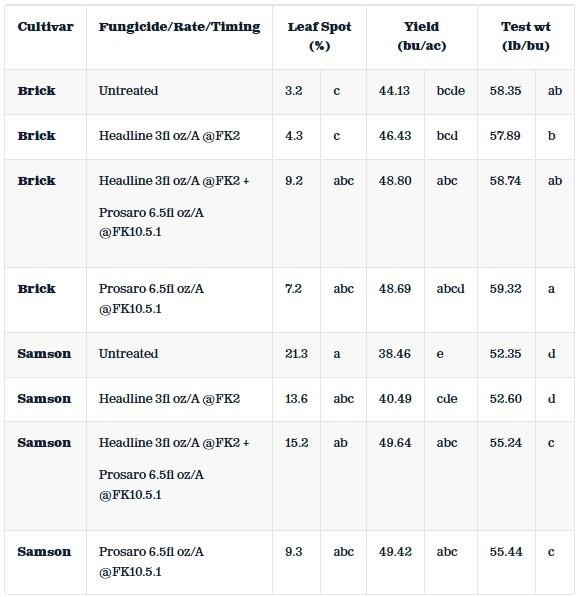By Emmanuel Byamukama
Winter wheat progress is relatively behind the five-year average given the long winter season and low spring temperatures we have had. However, some of the winter wheat fields and soon most will be at the tillering stage. At the tillering stage some growers do apply a fungicide tank mixed with a herbicide to save on the application costs. It is important to scout and diagnose accurately early season diseases in winter wheat to determine the need for an early season fungicide.
Common Early Diseases
The two most common fungal diseases found in winter wheat at the tillering stage are tan spot and powdery mildew.
TAN SPOT
Tan spot can be found in almost every wheat field in South Dakota. The tan spot pathogen survives on wheat, other small grains, and grass stubble (Figure 1). Non-rotated wheat fields tend to have early onset of tan spot. Tan spot lesions first appear on the lower leaves and over time can be found in the middle or throughout the canopy. Tan spot lesions have a dark brown center surrounded by a yellow halo.
Figure 1. Disease cycle of tan spot.
POWDERY MILDEW
Powdery mildew is also an early season disease but is more common in wheat fields with early dense growth stemming from high soil fertility conditions. The powdery mildew pathogen survives on wheat stubble and the in-field source of inoculum is the most important. The disease develops in lower leaves where there is poor air movement and prolonged free moisture presence on the leaves. Initial symptoms of powdery mildew are small cotton mycelia on upper leaf surface and lower parts of the stem (Figure 2). Continued disease development can lead to the entire leaf surface covered with ash-like powdery mildew pathogen mycelia, which can lead to tiller abortion and reduced grain yield.
Figure 2. Powdery mildew on wheat leaves.
Early Fungal Disease Management
FUNGICIDE CONSIDERATIONS
A foliar fungicide application is the only in-season management practice for fungal diseases. However, several research results show that a fungicide applied at herbicide timing by itself is not profitable. As can be seen from the Table 1 below, the early treated plots (Feekes 2) for the susceptible cultivar Samson had similar yield as the non-treated plots. The early fungicide timing plus fungicide at flowering was not significantly different from the flowering timing alone. Test weight was also improved by flowering fungicide timing in the susceptible cultivar. This is because most fungicides have a 3-4 week residual period and leaves that develop after fungicide application may not have protection. Diseases which develop on the flag leaf and the leaf below flag leaf (flag leaf minus one) contribute the most to the yield loss and therefore these leaves require protection from fungal diseases.
Table 1. Effect of fungicide timing on wheat yield for 2018 growing season. Plots were established at the Volga Research Farm.

FK2 = tillering growth stage
FK 10.5.1 = flowering growth stage
SCOUTING
Growers should scout their fields to determine type and level of diseases developing in their fields before deciding to apply an early season fungicide. If tan spot and powdery mildew are just starting to develop, a fungicide may be delayed as these diseases do not typically spread as quickly. However, for fields planted into wheat stubble and with moderate levels of fungal leaf spots developing, a fungicide applied at herbicide timing may be beneficial. North Central Small Grain Diseases Working Group provides a rating of various fungicides against these diseases. Consult their
wheat fungicide table for various fungicides and their efficacy rating.